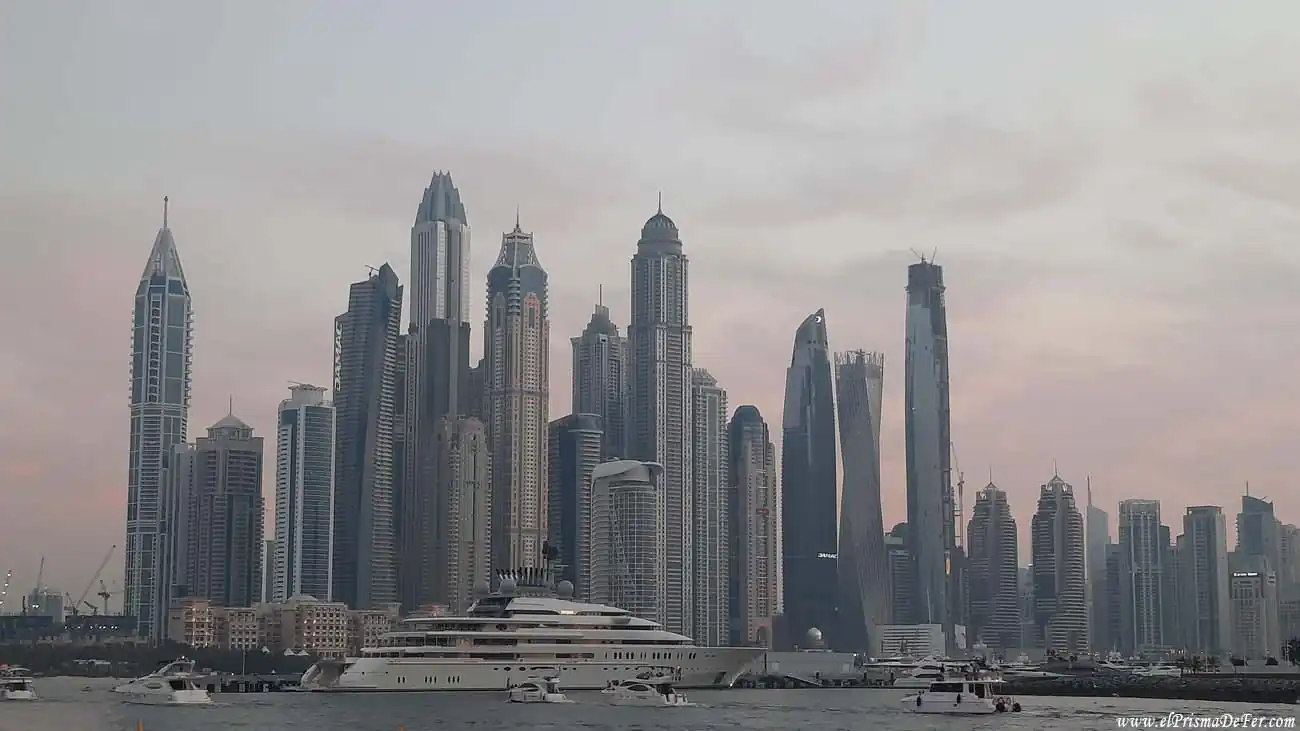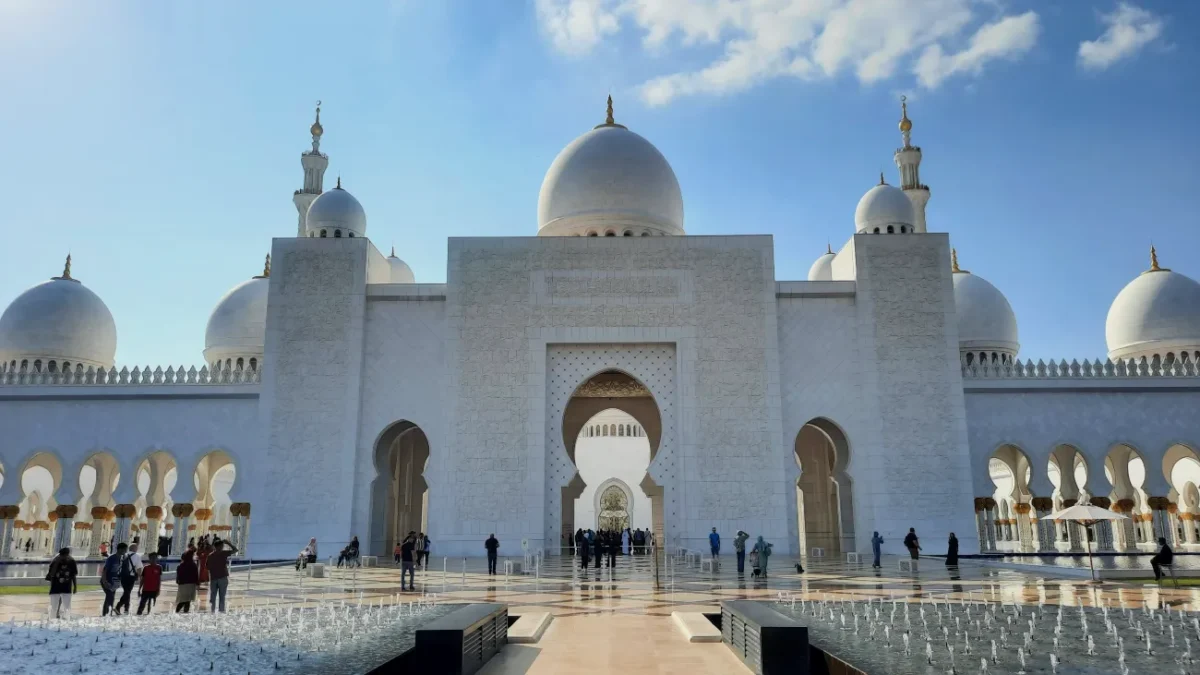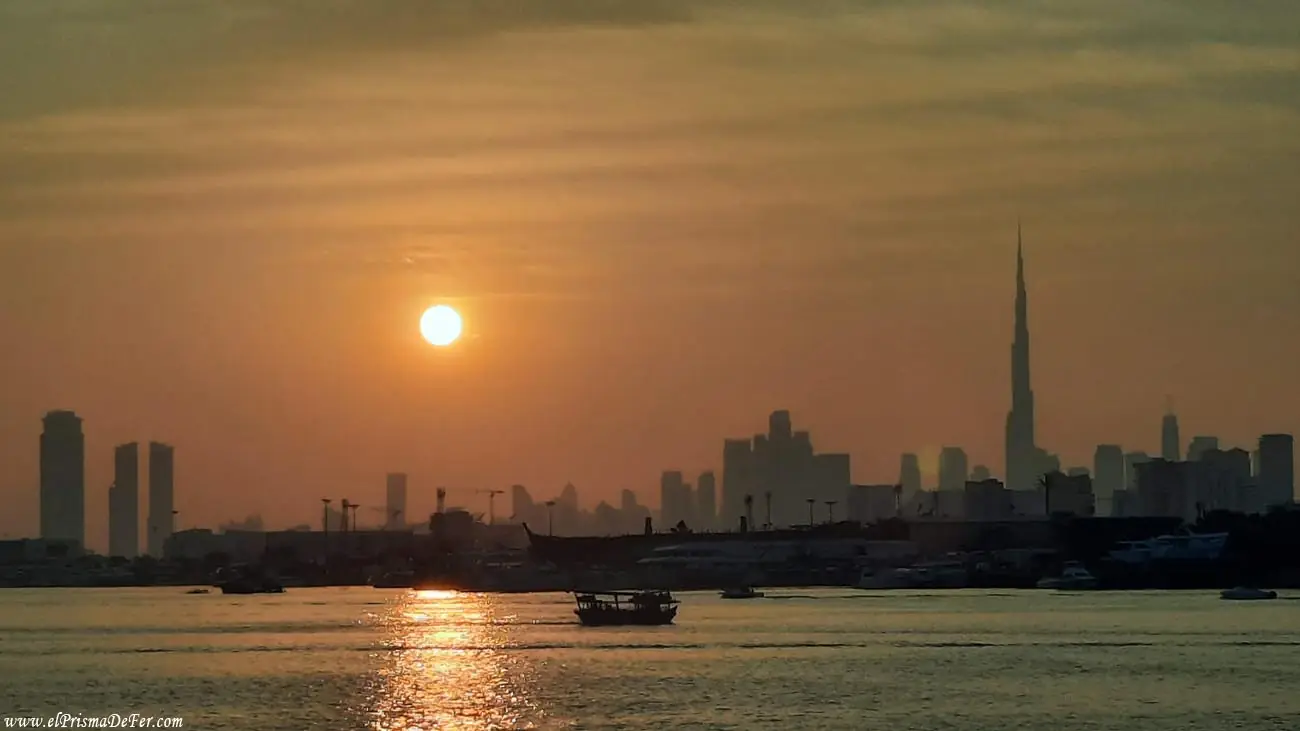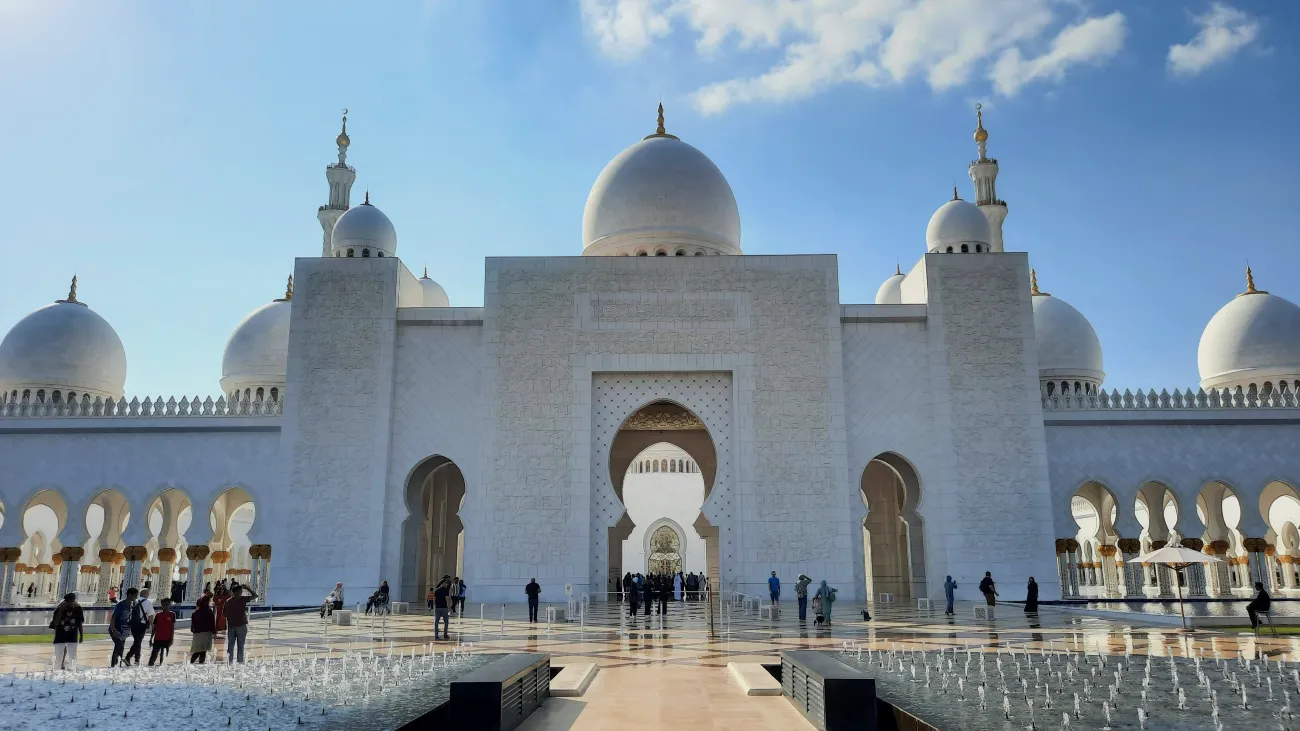In this travel guide to the United Arab Emirates, I share everything you need to know to plan your visit to the country: how to get around, what to see, how many days to stay, key cultural facts, and practical tips to make the most of your stay. Whether you're traveling on a backpacker's budget or looking for a more comfortable experience, the Emirates can surprise you...for better or worse.
Because traveling to the United Arab Emirates often feels like walking through a huge amusement park: everything is modern, shiny, and perfectly designed to impress. But there's also something artificial about the atmosphere, as if many of the things you see aren't deeply rooted. Unlike other destinations with a rich history palpable in their streets, tourism here revolves more around luxury, malls, futuristic buildings, and extravaganzas than traditional culture or historical legacy.

Table of Contents
What to know before traveling to the United Arab Emirates
| Language 🗣️ |
| The official language is Arabic, although English is widely spoken, especially in tourist and urban areas. |
| Currency 💵 |
| The local currency is the Emirati dirham (AED). 1 USD equals approximately 3.67 AED. You can use your card almost everywhere. There are also ATMs. |
| Religión ☪️ |
| The predominant religion is Islam, and much of daily life is influenced by this faith. It is important to respect its customs and cultural norms. |
| Ubicación 📍 |
| The United Arab Emirates is located in the Middle East, on the Arabian Peninsula, bordering the Persian Gulf and bordering Saudi Arabia and Oman. |
| Capital 🏙️ |
| The capital is Abu Dhabi, although Dubai is the best known and most visited city. |
| Visa 🛂 |
| Citizens of many countries, including Spain and Argentina, can obtain a free visa upon arrival, valid for 30 days. It's always a good idea to check before traveling. |
Map of the United Arab Emirates
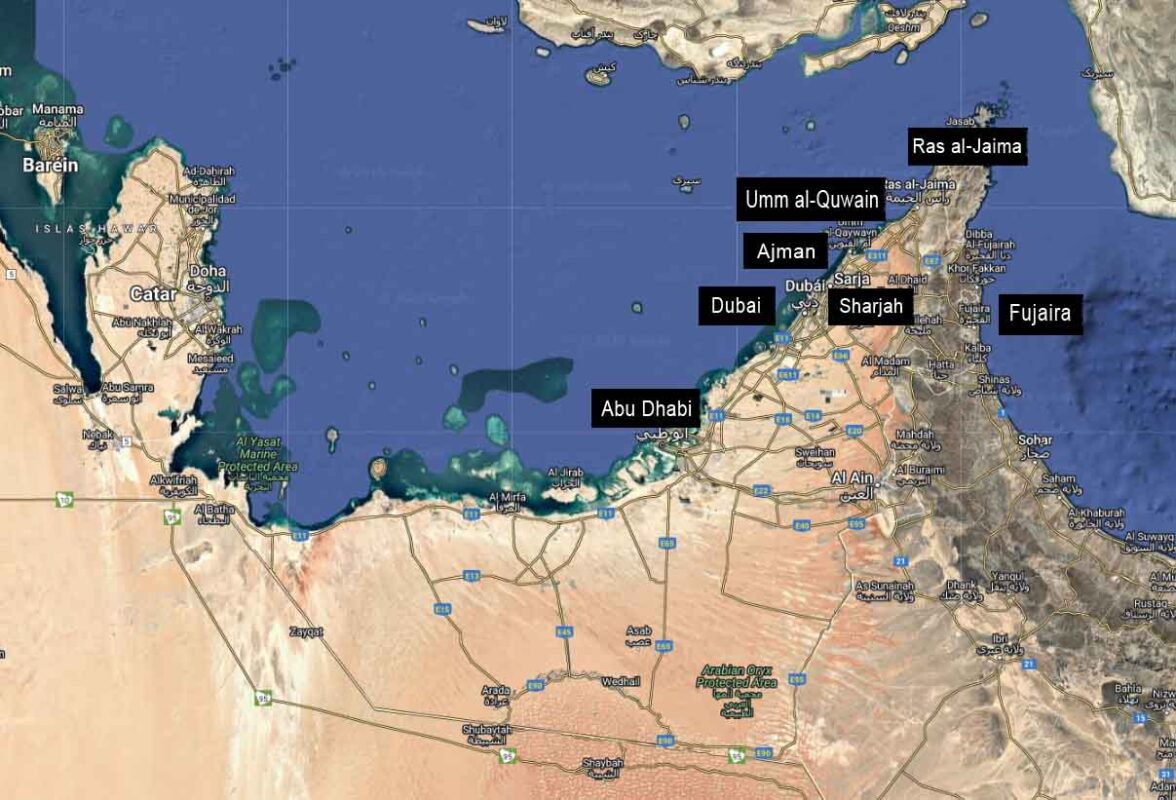
A Brief History of the UAE: From Desert to Modern Luxury
Until the mid-20th century, the UAE was little more than a small fishing and pearl trading village in the Persian Gulf. Its inhabitants lived a simple lifestyle based on fishing, pearl collecting, and camel herding in the arid desert. Everything changed radically in 1958, when significant oil reserves were discovered beneath its land and waters.
Oil wealth completely transformed the destiny of the Emirates. Under the leadership of Sheikh Zayed bin Sultan Al Nahyan, considered the founding father of the United Arab Emirates, an ambitious modernization process began. Oil revenues were used to build roads, hospitals, schools, housing, and infrastructure, laying the foundations for a modern state.
In 1971, six emirates formed part of the UAE, with Abu Dhabi as its capital and economic engine. Unlike Dubai, which invested heavily in tourism and entertainment, Abu Dhabi opted for a more measured, though no less ambitious, development strategy: it invested in culture, architecture, and sustainability.
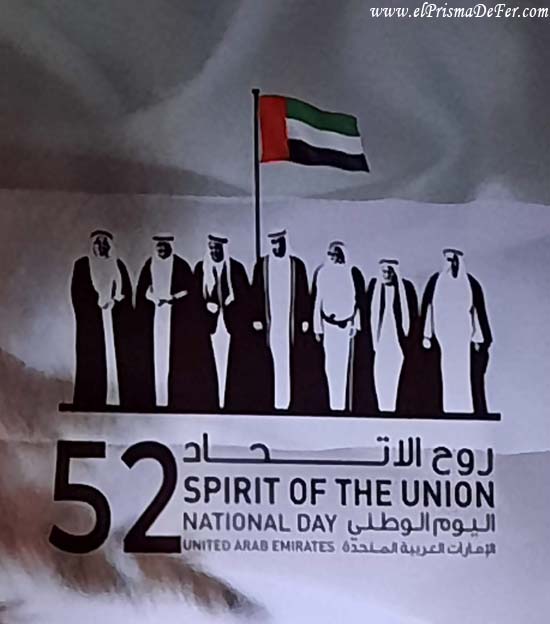
Cultural contrasts between the United Arab Emirates and the Western world
Traveling to the United Arab Emirates means being transported to a reality with very different cultural codes. Although the country is modern, clean, and highly developed, daily life is still guided by the traditions of Islam and Emirati culture.
One of the most obvious contrasts is in dress: while in the West, casual clothing predominates, in the UAE it's common to see locals in traditional attire: men in white kandura and women in black abayas. Although as a tourist you aren't expected to follow these customs, it is important to dress modestly, especially when visiting religious sites or less touristy areas.
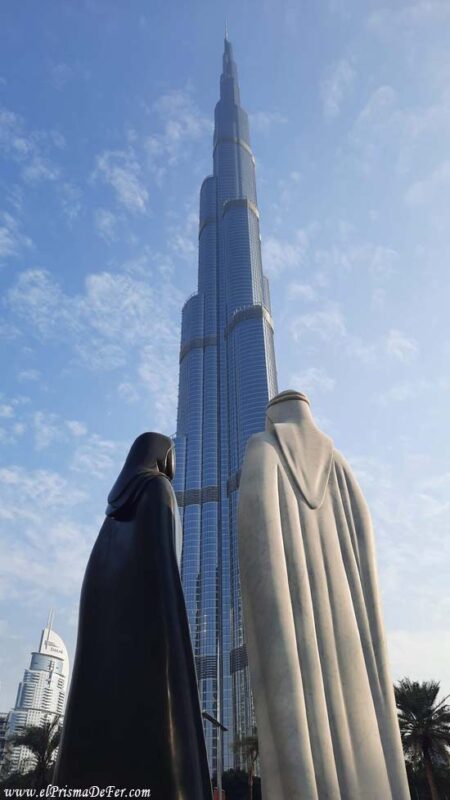
Public displays of affection, such as kissing or hugging in the street, are frowned upon. It's also advisable to moderate your tone of voice, as respect and discretion are highly valued in the local culture. In some cases, gestures that may seem normal in other countries can be offensive here.
Another key point is alcohol. Although it's permitted in certain hotels, bars, and authorized restaurants, drinking in public is prohibited, and you're certainly not allowed to walk around drunk (although there is some flexibility for tourists). Furthermore, drug use is severely punished, even in small amounts.
Many locals are friendly and respectful to visitors, and while not all of them speak fluent English, they'll try to help you if you need it. Adapting to these codes is not only a sign of respect, but also allows you to better understand a way of life where religion, family, and tradition take center stage.

Guide to moving around the United Arab Emirates
Getting around the United Arab Emirates on your own is easier than it seems, especially if you plan ahead. The distances between major cities, such as Dubai, Abu Dhabi, Sharjah, and Al Ain, are not very far, and the country has good routes and a variety of transportation options.
Long-distance buses 🚌
For those who don't want to drive or are on a tighter budget like mine, there's the option of taking intercity buses, which are safe, affordable, and air-conditioned. The bus company RTA (Roads and Transport Authority) has several daily services connecting major cities. Buses depart from Dubai to Abu Dhabi, Sharjah, Fujairah, and other destinations fairly frequently. For example, the journey between Dubai and Abu Dhabi takes about two hours and costs little.
There are also intercity taxi services, although they are more expensive. Another modern and convenient alternative is to use apps like Careem or Uber, which operate in most cities in the country.
Car rental 🚗
The most practical and flexible way to travel around the country is by renting a car. The roads are in excellent condition, well-signposted (in English and Arabic), and gas stations are plentiful. With a GPS or simply using Google Maps, it's very easy to get from one emirate to another. Plus, gasoline is much cheaper than in many other countries...they have plenty of it :D
Public transport within Abu Dhabi and Dubai
If you plan to travel between both cities, you'll need two cards: the Hafilat for Abu Dhabi and the Nol for Dubai. There's no integrated card that works nationwide. Also, cash payments aren't always allowed on buses, so make sure you have a balance on the appropriate card before traveling.
There's no metro in Abu Dhabi, but there's a wide range of buses that cover the entire city. Dubai, on the other hand, has a good metro system that connects the city from one end to the other, including the International Airport.
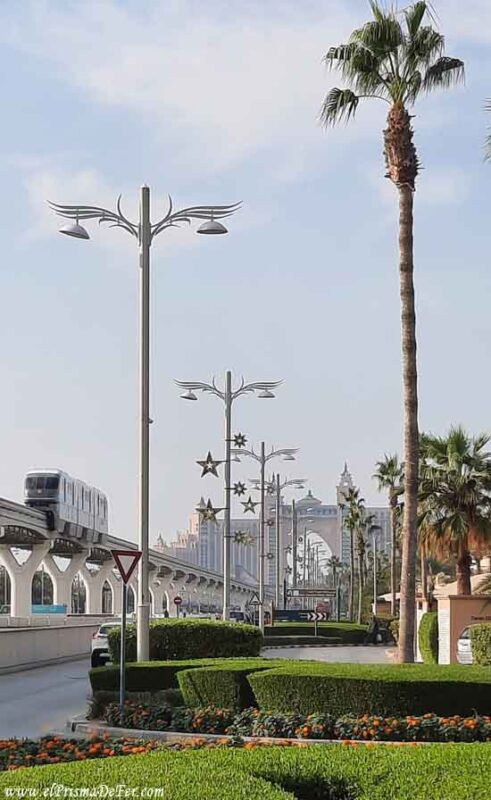
Train 🚆
For now, the train is not yet an option for tourists, although a rail system (Etihad Rail) is being developed that will in the future connect several emirates and borders with Saudi Arabia and Oman.
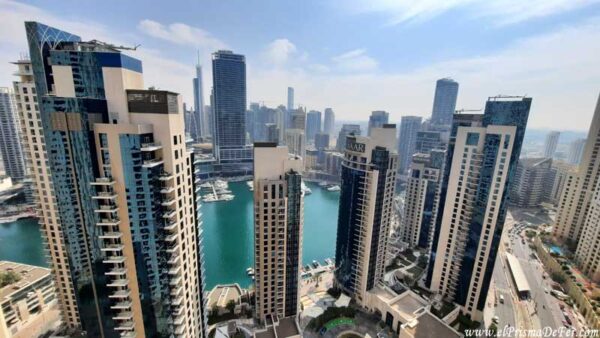
Te puede interesar leer mi post sobre como viajar barato por los Emiratos Árabes Unidos, con consejos sobre donde comer, como moverte y alojarte de forma económica.
What to see in the United Arab Emirates?
Dubai
The United Arab Emirates is a small country, but it's a fascinating destination for tourists. Dubai steals the show, with its futuristic skyscrapers like the Burj Khalifa, the tallest building in the world (so far), gigantic shopping malls, artificial islands, and extravagant experiences like skiing in the desert or a 4x4 safari through the dunes. It's also a great place for those seeking luxury, nightlife, and modern architecture.
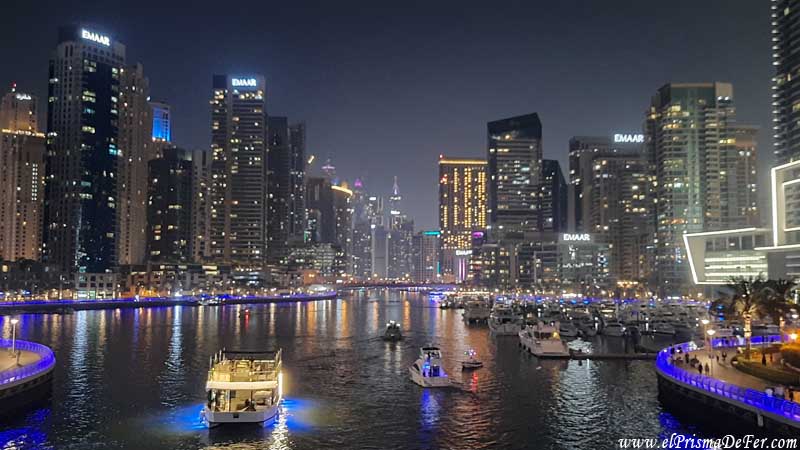
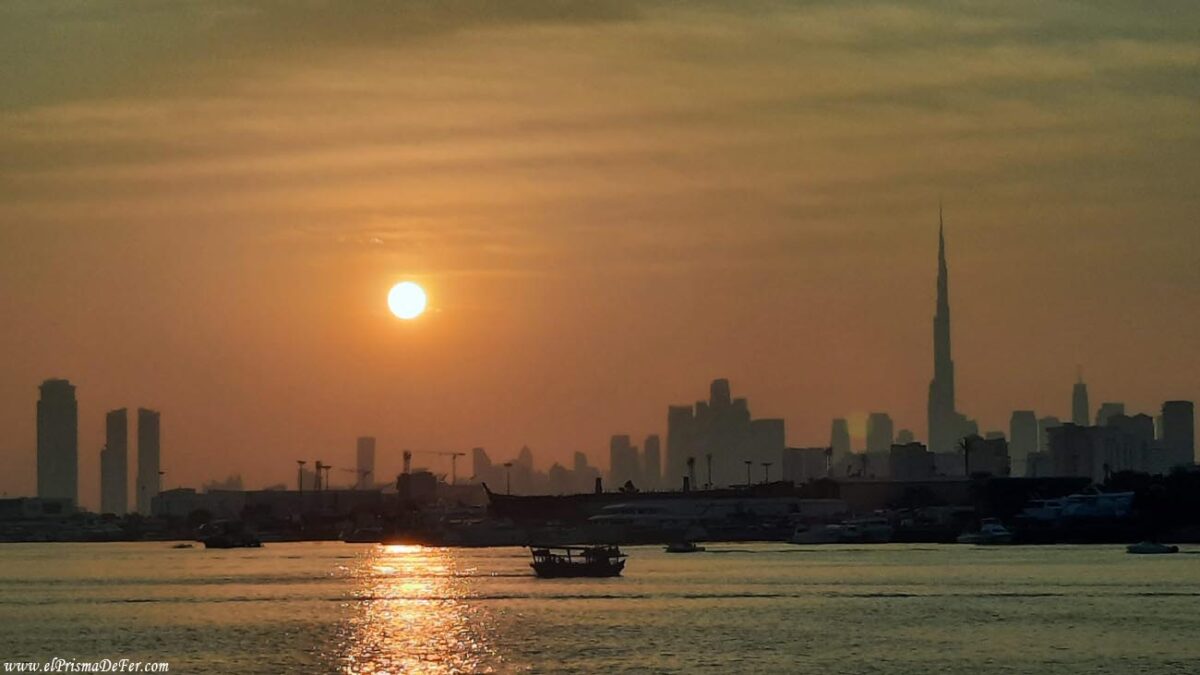
You might be interested in reading about my time in Dubai, an unfiltered post where I tell you about the good and bad things I felt when visiting this eccentric city in the United Arab Emirates
Abu Dhabi
Abu Dhabi, on the other hand, offers a somewhat more subdued but equally attractive experience, with attractions such as the majestic Sheikh Zayed Grand Mosque, the modern Louvre Museum, and the seaside Corniche.
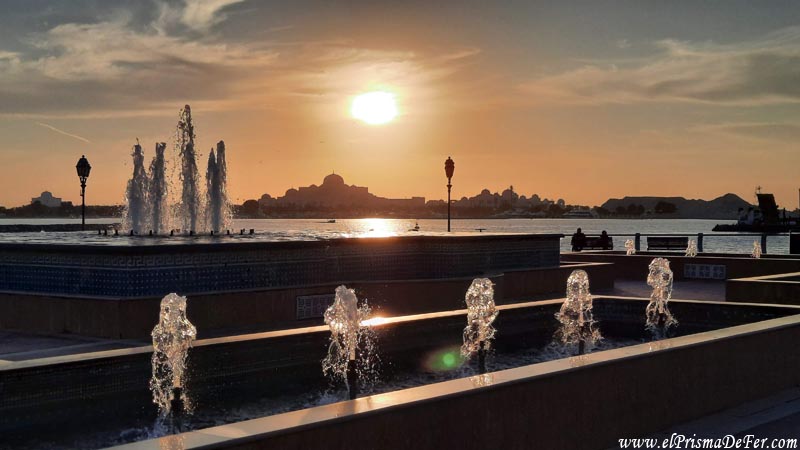
Other sites
Outside of these two major cities, there are also places to discover: from the quiet beaches and water activities in Umm al-Qaywayn or Fujairah, to the historic forts of Al Ain, to a desert tour. It's true that everything is centralized in Abu Dhabi and Dubai, but if you have time and want to see something different, it may be worth visiting the other emirates.
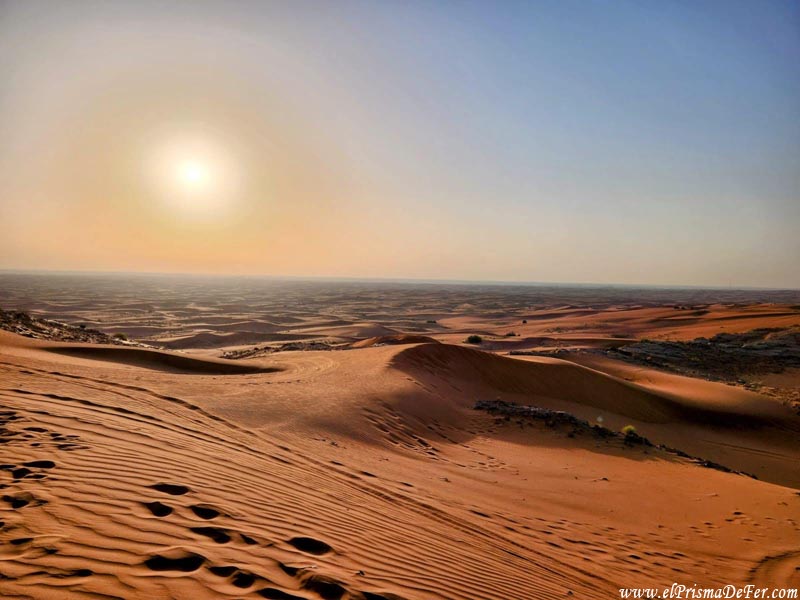

Best time to go to the United Arab Emirates
The climate in the United Arab Emirates is desert-like, with extremely hot summers and mild winters. The best time to visit the city is:
- November to March: Temperatures are pleasant, hovering around 20–28°C during the day. It's ideal for walking, enjoying beaches, and exploring without the heat. It also coincides with several cultural events and festivals.
- April and October: These are transitional months, with somewhat high but still bearable temperatures. You can find better prices on accommodations.
- May to September: It's low season due to extreme heat, with highs exceeding 40°C. The city continues to operate normally (everything has air conditioning), but many outdoor activities become unpleasant or even impossible.
Is the UAE safe? 🛡️
Yes, it's an extremely safe country. The crime rate is very low, even in large cities like Dubai or Abu Dhabi. You can walk down the street at night without worry, leave your backpack unattended for a few minutes (although I don't recommend it), or use public transportation without fear. The penalties for crimes are severe, and this contributes to a high level of respect for the law. As with any destination, it's worth maintaining common sense, but generally speaking, the Emirates is one of the safest countries in the world for tourists.
One symptom of this is that I saw almost no police or visible security presence in the city. However, there are numerous cameras on the streets, which gives the impression that, even if it doesn't seem like it, everything is being watched and any crime would be quickly recorded.
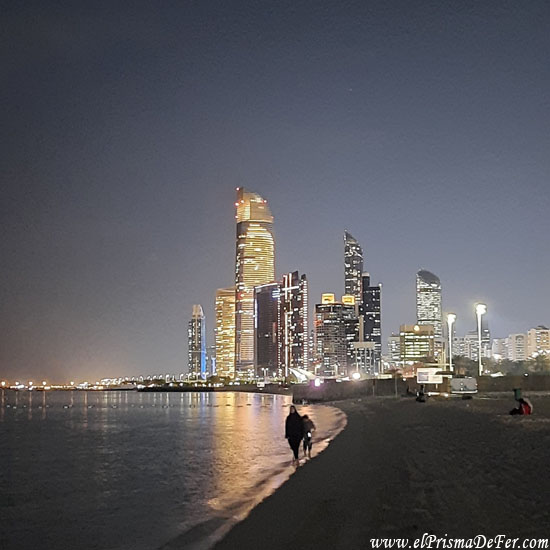
Can you travel alone in the USA?
Traveling alone in the United Arab Emirates is entirely possible and very comfortable. The infrastructure is modern, there's good transportation, accommodations for all budgets, and plenty of signage in English. It's also a multicultural country, so you'll encounter travelers and workers from all over the world. Don't expect hostel-like and backpacker-friendly living like in Southeast Asia: the independent travel scene isn't as strong, but there are places to socialize, especially in Dubai and Abu Dhabi.
Is it expensive to travel to the United Arab Emirates? 💵
In general, the Emirates are considered an expensive destination, especially Dubai and Abu Dhabi, where luxury hotels, gigantic malls, and high-end restaurants are concentrated. However, you can travel more affordably with good planning. There are modest accommodations, very affordable local and Indian food options, and efficient public transportation. The most expensive things tend to be admission to tourist attractions, taxis, and accommodation in central or upscale areas. If you're traveling as a backpacker or on a budget, you can get by, but don't expect super-low prices like in other Asian destinations.
Which SIM card should I use in the United Arab Emirates?
The country's two main operators are Etisalat and du, both of which offer SIM cards for tourists. They can be easily purchased at the airport (although they tend to be more expensive there) or in shopping malls. There are specific visitor packages that include data and calls. For example, you can get anything from 2 GB to 10 GB or more, with a validity of 7 to 28 days.
Another option for those traveling through several countries in the region is to use an international eSIM with coverage in the Middle East. The connection is generally very good throughout the country, even in less urbanized areas.
How many days do I recommend staying in the United Arab Emirates?
I spent two weeks in the United Arab Emirates, specifically in Abu Dhabi and Dubai, and I must say it seemed like a considerable amount of time. While these two cities have many attractions to visit, they can be easily explored in four to six comfortable days, especially if you're not one for spending hours in malls or shopping centers like me.
If you add excursions to places like Al Ain, the desert region, or an island, you might be able to stretch your stay to a week without getting bored. But beyond that, the experience can become repetitive or too touristy and luxurious, leaving little room for authentic exploration.

